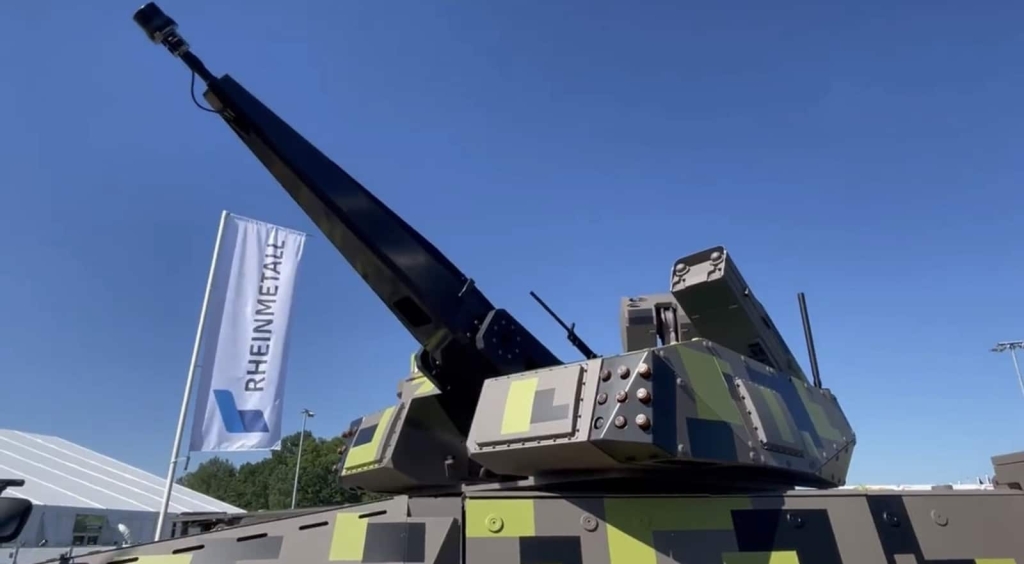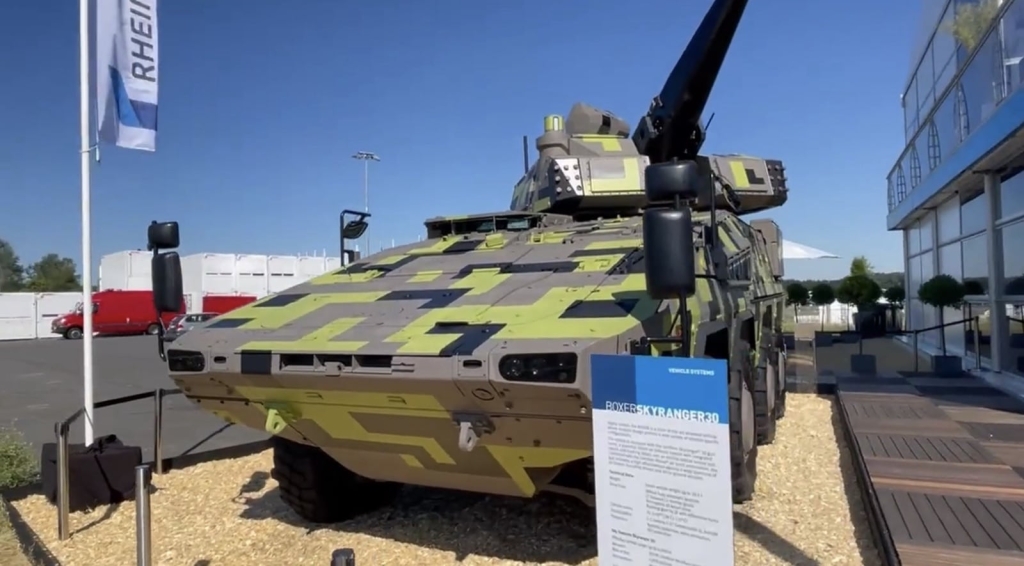Germany Approves $563M For Anti-Drone Missiles That Won’t Arrive Until 2029

Germany’s parliament has approved approximately $563 million to develop and procure MBDA’s DefendAir counter-drone interceptor missiles, funding a weapon system that won’t reach serial production until 2029—more than four years away—even as small drone threats continue to escalate across Europe.
The German Bundestag’s budget committee approved roughly €490 million ($563 million USD) to develop and procure the short-range missile designed to defeat small unmanned aircraft. The approval paves the way for a contract between the Bundeswehr and MBDA Deutschland, with an additional €25 million ($29 million USD) approved by the defense committee to enable the ministry to finalize the deal with the manufacturer.
Development Timeline Extends To End Of Decade
According to reporting from German defense publication hartpunkt, slightly more than two-thirds of the €490 million funding is earmarked for development and qualification of the weapon that MBDA now markets as DefendAir, formerly known as the Small Anti Drone Missile (SADM). The remaining funds cover the initial production batch.
Parliamentary documents and industry briefings indicate the program includes not only the missiles themselves and production line setup, but also development and qualification of launch containers. Industry sources say serial production is scheduled to begin in 2029, with deliveries to the Bundeswehr potentially starting in 2030.

Integration With Skyranger 30 Air Defense System
DefendAir has been selected by the Bundeswehr as secondary armament for the Skyranger 30 air defense gun vehicle. The defense committee approval addressed the separate funding package for the missile program—integration of the interceptor on the Skyranger platform was reportedly already covered in the vehicle’s existing development and procurement contract.
Plans call for each Skyranger to carry at least nine DefendAir missiles, with procurement documents noting the possibility of twelve rounds per vehicle. The Skyranger 30 combines a 30mm autocannon with sensor and command systems for short-range air defense, and adding a dedicated interceptor missile expands the vehicle’s engagement options against small drones, loitering munitions, and other low-signature threats.
Technical Specifications And Capabilities
MBDA Germany is developing DefendAir by adapting its existing lightweight munition family, known in Bundeswehr classification as “Leichtes Wirkmittel 1.800 +” and sold commercially under the name Enforcer. The new interceptor adds an air-target seeker and a booster to extend reach relative to the baseline Enforcer round.
Company and parliamentary summaries indicate the booster will raise the interceptor’s reach to roughly five kilometers (3.1 miles), enabling engagement of small aerial threats at short ranges appropriate to vehicle-mounted, point-defense roles. The missile’s smaller size and lower cost relative to traditional air defense missiles would allow the Skyranger 30 to carry more rounds and engage multiple drones in rapid succession.
Broader European Counter-Drone Investment Trend
German officials framed the move as part of ongoing modernization of ground-based air defense. Documents circulated within the Bundestag show the program is built around a dual timetable: an immediate development and qualification phase paid from the approved funding tranche, and a later production phase that will be triggered by follow-on orders.
Germany’s decision highlights a broader trend across Europe: armies are investing in purpose-built, missile-based counters to small unmanned systems that can be deployed on mobile platforms. The DefendAir approach—combining a seeker, a booster, and containerized launchers—reflects the operational problem many militaries now face in protecting maneuver forces and critical infrastructure from low-cost aerial threats.
The program’s timetable, with qualification work underway and production slated for the end of the decade, also signals how militaries are managing risks between short-term capability gaps and longer procurement cycles.
DroneXL’s Take
Germany is spending half a billion dollars on counter-drone missiles that won’t arrive until 2029, and that timeline crystallizes everything wrong with traditional defense procurement in the drone age. While the Bundeswehr waits four years for DefendAir, Ukraine has already revolutionized air defense with $2,500 interceptor drones that are destroying Russian Shaheds every night—and NATO members are racing to copy the Ukrainian model through emergency partnerships.
The irony cuts deeper when you remember Rheinmetall CEO Armin Papperger warned in September that military drones could become the defense industry’s “biggest bubble,” questioning whether the UAV market’s explosive growth is sustainable. Yet here’s Germany committing massive funding to counter those very drones through traditional, expensive, slow-development channels. The contradiction suggests defense contractors understand the threat perfectly well—they just prefer solutions that maintain existing business models and profit margins.
Context matters here. Just three weeks ago, we covered how France and Germany are blocking the EU’s “drone wall” initiative despite urgent security threats from repeated Russian drone incursions across NATO airspace. Germany and France’s resistance to EU coordination looked increasingly foolish when Russian drones were literally flying over their neighbors’ capitals. Now Germany is funding its own national counter-drone program while simultaneously blocking pan-European cooperation. It’s classic sovereignty politics trumping operational efficiency.
The timeline problem exposes a dangerous capability gap. Germany has been dealing with systematic drone surveillance of critical infrastructure for over a year. We documented mysterious overflights of Ramstein Air Base, suspected Russian drones over Brunsbüttel nuclear facilities, and surveillance of arms supply corridors throughout 2024 and 2025. The threat is happening now. DefendAir arrives in 2030.
Compare that to Ukraine’s approach: when faced with waves of Russian Shahed drones, Ukrainian engineers transformed commercial quadcopters into specialized hunter-killers within months. The UK announced Project OCTOPUS in September to jointly develop and mass-produce thousands of Ukrainian interceptor drones monthly. The Netherlands committed €200 million for joint drone production in October. Denmark hosted Ukrainian specialists who demonstrated successful intercepts during NATO exercises. These partnerships deliver operational capabilities in months, not years, at a fraction of traditional defense acquisition costs.
DefendAir isn’t necessarily a bad solution—it’s a slow one. The missile’s five-kilometer range and integration with Skyranger’s sophisticated sensor suite addresses legitimate operational requirements that cheap interceptor drones can’t fully replace. Layered defense makes sense: $2,500 FPV interceptors for swarms, purpose-built missiles for harder targets, and traditional air defense for cruise missiles and aircraft. The problem is the procurement timeline treats 2029 as acceptable when the battlefield reality demands solutions today.
The economics also deserve scrutiny. We don’t have DefendAir’s per-unit cost yet, but traditional counter-drone options vary wildly—from $80 for a 20mm round to $4.2 million for a Patriot PAC-3 missile. DefendAir presumably slots somewhere in the middle, but even at $50,000 per missile, you’re still spending 20 times what Ukraine’s Sting interceptor costs. When Admiral Vandier said “if you fire $1 million missiles at $10,000 targets, eventually you lose,” he captured the fundamental challenge traditional defense procurement can’t seem to solve: matching the cost curve to the threat curve.
Germany’s investment does validate one critical lesson from Ukraine: you need volume. Nine to twelve missiles per Skyranger vehicle, with hundreds of Skyrangers planned, means Germany is finally thinking about counter-drone defense at scale rather than boutique capabilities. That’s progress. But the timeline gap between threat and solution remains dangerous.
What do you think? Share your thoughts in the comments below.
